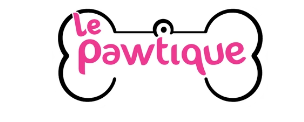Le Pet Care Fact #6 – Grooming Basics: Brushing
One of the pivotal aspects to owning a dog is to maintain their skin and coat. In order to achieve this, one must groom their pooch on a regular basis. The frequency of which depends on the length of the dog’s coat.
Brushing, for most dog breeds, forms an integral part of their grooming process and to maintain a healthy skin and coat. Tangled hair prevents the hair from breathing by restricting air flow between the follicles, this could lead to skin irritations or infections. Brushing therefore helps to remove tangled strands, any dirt or debris and removes dead hair.
So, when should one start brushing their pooch? Whether it’s a new puppy or a rescue pooch, the answer is the sooner the better. This also helps with the bonding process between your pooch and yourself. The sooner you start brushing the easier it will become for the pooch to adjust and get used to the brushing. Puppies can be brushed from 3 weeks of age; it helps to build their trust in you and their future groomers (if need be).
How often should dogs be brushed? Ideally long coated dogs should be brushed daily whereas short-coated dogs can be brushed every couple of days. Brushing can also be seasonally to help double-coated dogs shed their coat or to simply remove any knots from the coat if present. Dogs should especially be brushed before bathing, to remove any knots out first. If the coat is not brushed first, any knots will become tighter and harder to remove during the washing process.
So which brush to use for your pooch? This all depends on the pooches’ coat – whether its double, long or short coated, silky or wire haired. You must choose a brush to suit your dog’s size and breed. A puppy’s coat is softer, fluffier and shorter than most adult dogs so will need more of a sensitive brush. The biggest mistake dog owners make when brushing their dogs’ coat is, they only brush the top coat. This could allow the undercoat to matt, which is painful as the matts pull on the skin.
There are several types of brushes on the market:
- Slicker Brush – These have fine short bristles close together on a flat surface. The ends of the bristles are slightly curved to avoid the skin while still going through the hair. These kinds of brushes remove loose hair and dirt and help to take out any matts present. There are several different kinds and sizes in the market, some with hard bristles for more wire-haired or thick coated dogs and other with soft bristles for puppies, thin coated or shorter coated dogs.
- Rubber Brush – These are as the names suggests, made from rubber with rubber bristles. These are good for massaging the skin and removing dead hair. These brushes are good for the more smooth-coated dog breeds.
- Undercoat Rake – These types use minimal pressure to get to the thick undercoat of double-coated dog breeds. They help break up matts and tangles and help remove the loose hair from the undercoat. When choosing a rake, ensure the pins match the dogs’ coat length.
- Combs – Combs come in a variety of styles, widths and lengths depending on their use. Combs can be used in conjunction with a slicker brush to untangle the coat before bathing. It can also be used toward the end of grooming with scissors to finish off areas such as face, feet and feathers on the back of some dog breeds.
- Shedding tools – There are several different kinds on the market, but all are used to remove loose hair either from short coated dogs or double coated dogs. They normally have shorter, specially designed teeth that efficiently remove the hair from the coat.
So which brush works best for which coat type:
- Smooth coated dogs – Dogs such as Jack Russell, Bull Terriers etc a rubber brush will bring the dirt and loose hair to the surface.
- Short coated dogs – such as Maltese can be brushed with slicker brushes that go through the coat to remove any dirt or loose hair.
- Long -Coated dogs – such as bearded collies and Afghans need a slicker brush to get through the course top coat while not damaging the soft undercoat and then an undercoat rake to remove any knots that might be present there.
- Silky coated dogs – such as Yorkshire Terriers and Shih Tzu’s. They normally have long hair with no undercoat but their fur matts easily. Use a comb to remove any matts and then use a soft slicker brush to soften the coat and bring out its’ natural shine.
- Double Coated Dogs – such as Husky and Golden Retrievers, can be short or long-haired. They have a soft undercoat which sheds twice a year, and a weather resistant outer coat which sheds once a year. Both matts very easily, therefore, use a slicker or undercoat rake to remove any matts present and any loose hair. A deshedding tool such as a Furminator can be used to remove the loose undercoat hair.
- Curly coated dogs- such as French Poodles need a soft slicker brush as they have thick soft curls and are therefore harder to brush.
Some dogs may have different lengths or types of hair for their coat and may require the use of several different types of brushes to do the job fully. If you are still unsure about what bush to choose for your dog, pop in store for advice on our wide range of brushes or book an appointment with us and we will gladly take care of your dog’s brushing needs.
